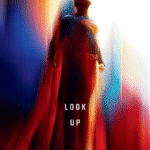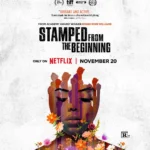
The Ritual, dir. David Bruckner (London: The Imaginarium, 2017) tells the story of four young men who take a three-day “lads trip” to northern Sweden. However, the trip is tainted by the death of their friend Rob (Paul Reid) who was killed in the robbery of a liquor store on the night they planned the trip. While most of them wanted to spend time at the beach or another relaxing destination, they opt to defer to Rob’s choice in honor of his memory. Furthermore, Luke (Rafe Spall) is overcome with grief, as he holds himself responsible for Rob’s death. He was the only one in the liquor store with him, and he wonders if he was not a coward for his inability to save Rob’s life.
While the men–with characteristic English humor–make jokes about the unpleasantness of their hike, it becomes an active challenge when Dom (Sam Troughton) falls, twisting his knee. Recognizing that traveling an additional two days would be unfeasible on foot, Hutch (Robert James-Collier) urges them cut off the trail into a dense forest, where strange things begin to happen. They find a dead deer hanging from trees, and–after a rainstorm interrupts their progress–they find shelter in an abandoned cabin. After finding a wicker man upstairs, they drift to sleep.
A series of supernatural events allow viewers to sink their teeth into the meat of the film.
Given the presentation of the first act, I anticipated that the movie would be a heavily commercialized reflection on guilt and grief. While the characters all carry their own traumas, the film largely avoids questions of agency, personal responsibility, and our ability to act in the face of challenging circumstances. Instead, the plot becomes a hunt imbued with classic tropes of the horror genre without dwelling extensively on the themes initially presented.
The Ritual owes a debt to the early forerunners of weird and folk horror. The “creature” hunting our protagonists is an ancient demigod: the bastard son of Loki. The cultists at the cabin in the third act are remarkably similar to H. P. Lovecraft’s cult of Chthulhu, and they worship the creature in order to live long lives. Moreover, the story of travelers lost in a forest, being hunted by an incomprehensible being is an echo of Algernon Blackwood’s “The Willows.”
In spite of the film’s superficiality, its aesthetics were alluring. The prospect of a primeval forest inhabited by eldritch beasts–forgotten since time immemorial–elicits an almost primal response within me: it attracts, it repels. This is the spell of the numinous that I discussed more extensively in “The Corruption of Sacred Knowledge,” and it really is powerful.
The question that I wish The Ritual would have engaged with more closely is: How do you return to your normal life after discovering that the old gods were not only mythology but continue to inhabit the world? What would that do to a person’s psyche? How might we live differently? Are they beings that should be worshipped, feared, or despised? Or, could we merely exist in parallel with them, cautiously ignoring their existence?
I liked the film not for its plot–standard horror fare–nor its themes, but for its otherworldly, preternatural atmosphere. For those seeking out serious cinema, it’s best to look elsewhere, but for those seeking out the draw of the eerie, it’s a film worth seeing.



